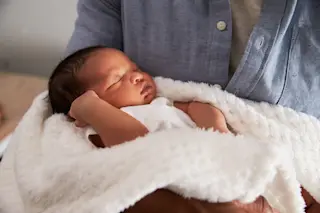Don't get a big head, your mother may have told you. That's good advice, but it comes too late for most of us. Humans have had big heads, relatively speaking, for hundreds of thousands of years, much to our mothers' dismay.
Our oversize noggins are a literal pain during childbirth. Babies have to twist and turn as they exit the birth canal, sometimes leading to complications that necessitate surgery. And while big heads can be painful for the mother, they can downright transformative for babies: A fetus' pliable skull deforms during birth like putty squeezed through a tube to allow it to pass into the world.
This cranial deformation has been known about for a long time, but in a new study, scientists from France and the U.S. actually watched it happen using an MRI machine during labor. The images, published in a study in PLOS One, show how the ...














